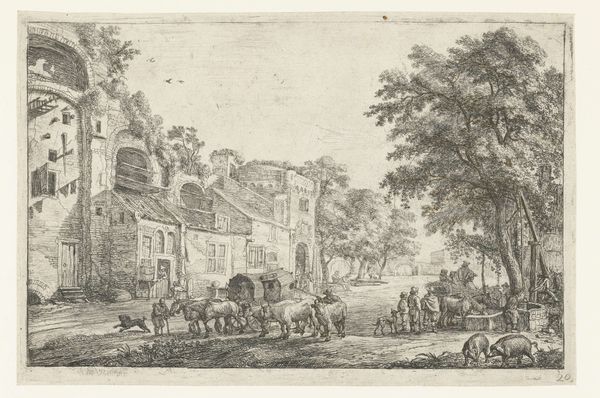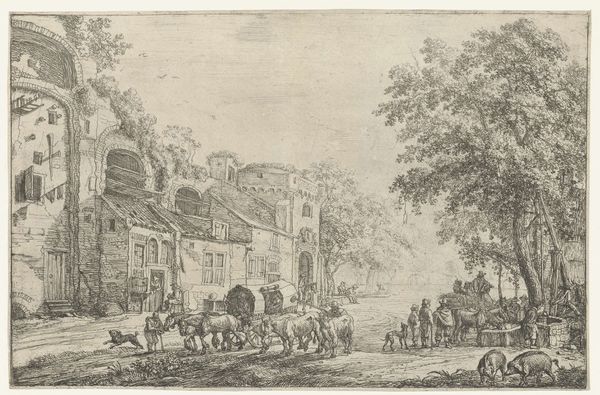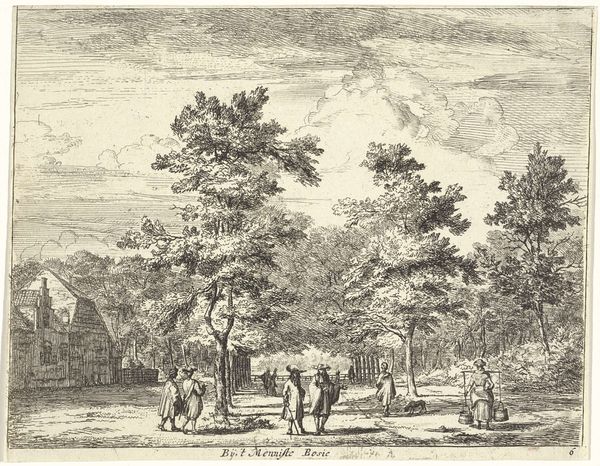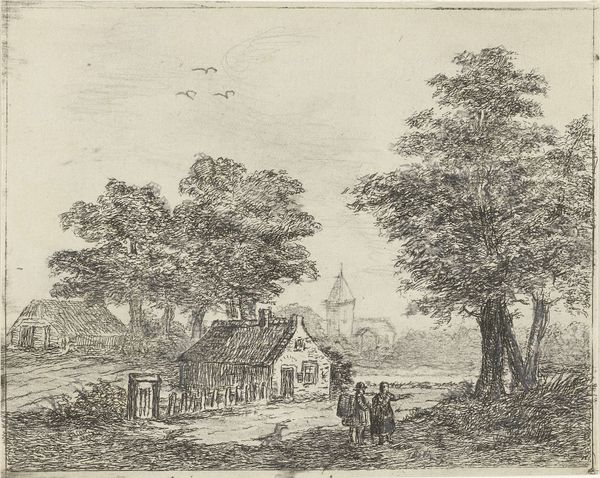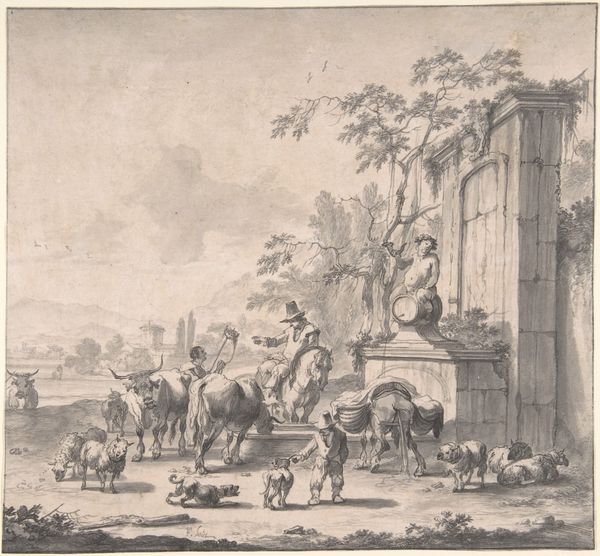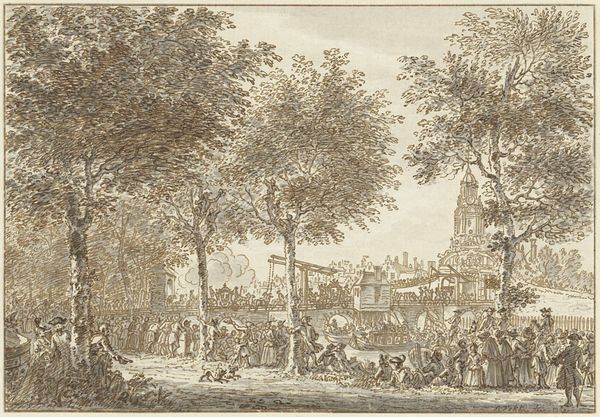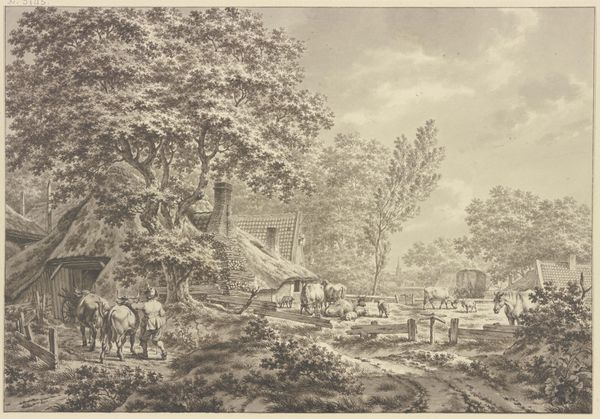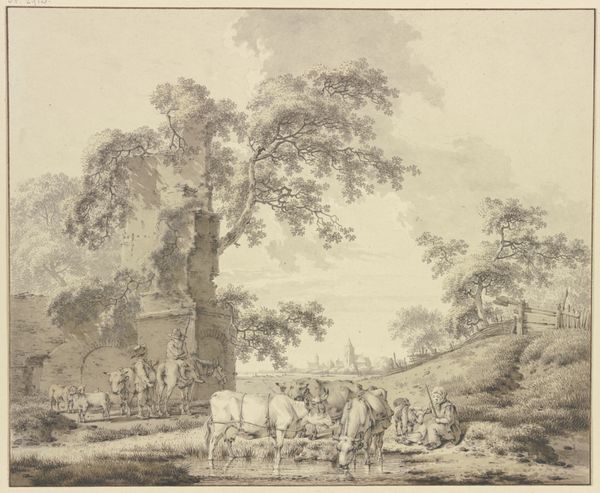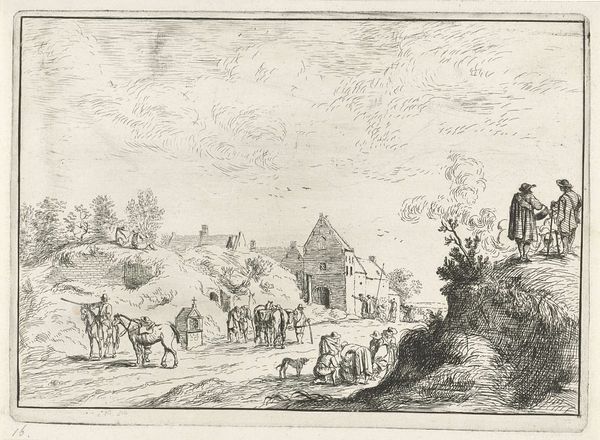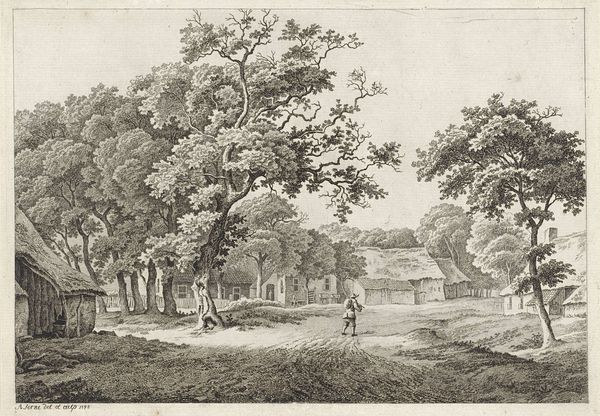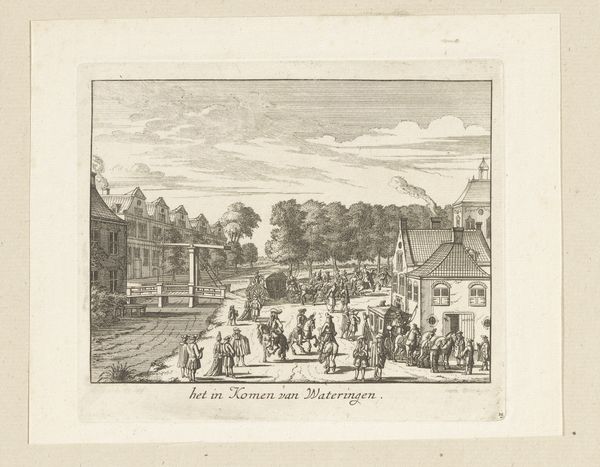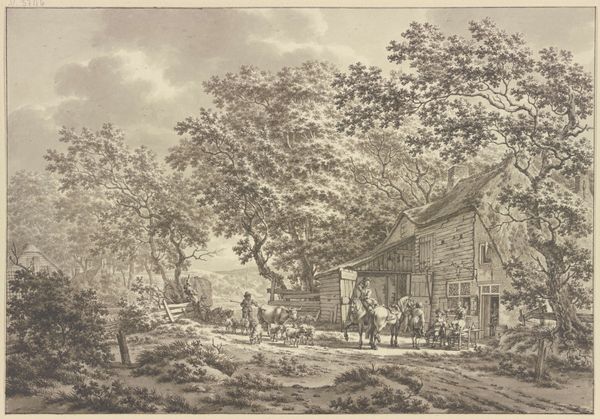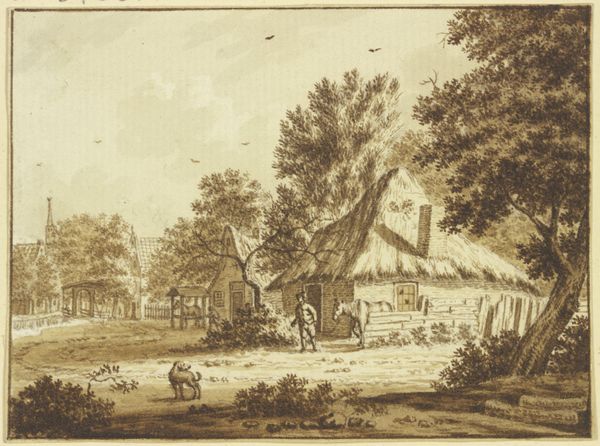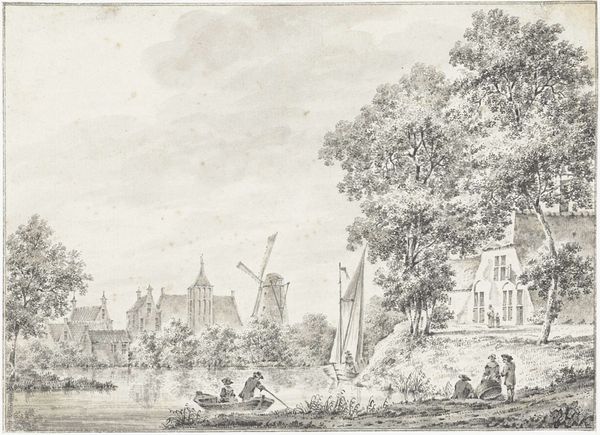
drawing, etching
#
drawing
#
baroque
#
dutch-golden-age
#
etching
#
landscape
#
etching
#
cityscape
Dimensions: 194 × 283 mm
Copyright: Public Domain
Curator: This etching, known as "Market Town," comes from the hand of Simon de Vlieger. Editor: My first impression is of everyday life, rendered with incredibly fine detail, a bustling yet tranquil scene. It seems so unassuming yet contains such intricacy. Curator: De Vlieger, situated in the Dutch Golden Age, certainly captures the nuances of ordinary labor. It is important to remember that the prosperity of the Dutch Republic in the 17th century relied heavily on trade and agricultural infrastructure. This piece reflects that reliance. Editor: Yes, the scale and distribution of resources becomes apparent when we focus on materiality; the worn etching plates are the conduits for de Vlieger to distribute the idea of labor through print making to those removed from these landscapes. But what are the social dynamics playing out? I'm curious about gender and how bodies navigate this space. Curator: It's easy to read the male laborers guiding livestock and engaging in commerce as emblematic of the power structures during the Golden Age, when Dutch society, while innovative, still reflected distinct class and gender hierarchies. The depiction of figures drawing water also provides insights into how the labour was gendered, as some have read similar imageries, particularly images related to wells, as a means to define normative femininity during that time. Editor: I wonder if we might view those 'ordinary' figures through a critical lens, noting the limited ways women's work is celebrated even as this burgeoning capitalist society benefited immensely from their unpaid work both in home and markets? The detail afforded to the livestock compared to those figures really enforces a hierarchical approach that would have dominated 17th century perspectives on materiality, with women serving a much lower status than both land, money and commodities. Curator: The dogs included might represent the commonality with rural, working-class lives but could equally be read as indicators of the status and leisure activities for merchants, perhaps acting as companions and guardians, representing another layer of complexity around domesticity and status. These rural scenes are far more than what meets the eye. Editor: Examining the means of de Vlieger’s production helps illuminate how ideas around rurality were materialised and consumed. That itself became a status commodity. These works served to bolster and further consolidate the capitalist ideology of the period. Curator: By emphasizing the details—the materials, the labor—you've shed light on how this etching can become an important reflection upon the time. Editor: Exactly, placing this “Market Town” in the broader framework of commodification and capitalism, while questioning assumptions, really adds depth to the artwork.
Comments
No comments
Be the first to comment and join the conversation on the ultimate creative platform.
